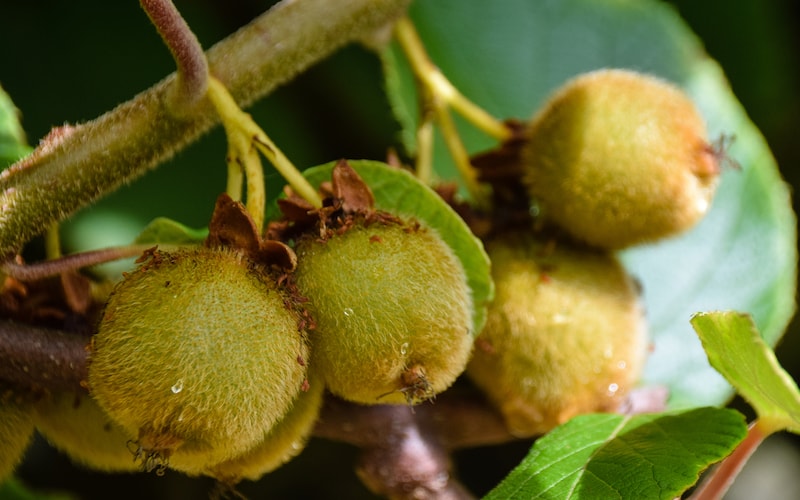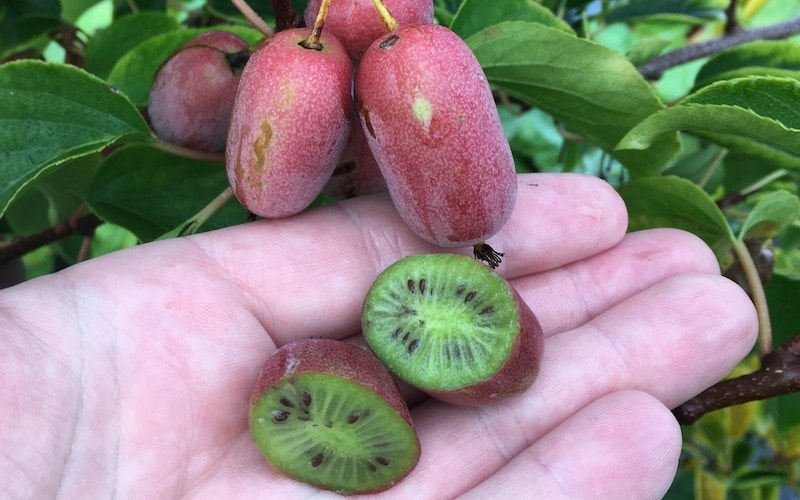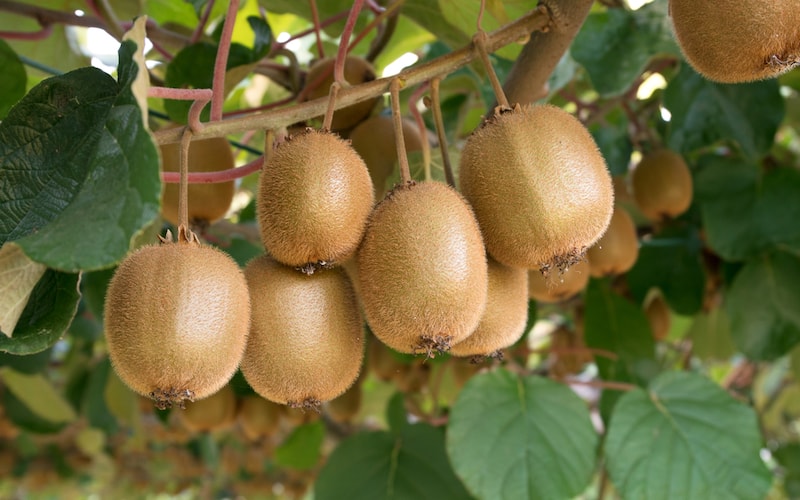Kiwi fruit is one exotic which grows well in the UK. In fact, fully hardy varieties can survive temperatures as low as -7C or even lower. If you have a sheltered, sunny spot and a wall or sturdy support to train your kiwis against, this vigorous climber will take off and, within a few seasons, will produce excellent crops of delicious, healthy fruit. Here’s everything you need to know to grow kiwis…
Browse our full range of kiwi fruit plants to find the best variety for your garden.
Where do kiwi fruits come from?

Image: Kiwi (Actinidia Arguta) Issai from Suttons
Despite their Antipodean name, kiwi fruits are actually native to China, where they’re known as ‘yang tao’ or ‘strawberry peach’. Traditionally, kiwis were harvested from the wild and considered medicinal plants, but now China is the world’s biggest kiwi grower, followed by Italy, with New Zealand coming in third place. Packed full of vitamins C, E, and K, the British discovered kiwis in the mid-19th century and gave them the name ‘Chinese gooseberry’.
It took until the turn of the last century before the plants were first successfully cultivated in New Zealand, where they soon became a popular crop. Cold War rebranding is responsible for the renaming of Chinese gooseberries to ‘kiwi fruit’, and today, they’re an increasingly common sight in UK gardens and allotments.
Where to plant kiwis

Image: Kiwi ‘Prince Jumbo’ (Male Variety) from Suttons
Kiwis are vigorous climbers and, if allowed, can reach a height of approximately 10m (30′). The plants should be trained up a strong trellis, pergola, or wire supports attached to a wall. Some Kiwi varieties are either male or female and require two plants to generate fruit. Other varieties are self-fertile, requiring only one plant for a tasty harvest.
Although some kiwis are fully hardy, they are still susceptible to unfavourable weather conditions and so should always be cultivated in a sheltered spot out of strong winds and rain. A south-facing wall or sturdy trellis is ideal because it both protects the blossoms and gives the fruit the best chance of fully ripening.
How to plant kiwis

Image: Kiwi (Actinidia deliciosa) Jenny from Suttons
Kiwi plants thrive in moisture-retentive, well-drained, slightly acid soil. Before planting your kiwis, dig plenty of well-rotted organic matter into the soil and add a general-purpose fertiliser like Growmore at a rate of 70g per sq (2oz per sq. yard). Kiwis need plenty of space and should be planted 10-15ft apart (3.5-5m).
The plants can be grown against a wall to which wires have been attached, or on free-standing wires that are attached to stout posts. Wires should be spaced 30cm (12″) apart, with the lowest wire 45cm (18″) and the highest 180cm (6′) above soil level. If you’re growing your plants against a wall, allow a few inches between the plants and the base of the wall.
Once your kiwi plants are in the ground, water well and make sure you keep the soil moist, especially during dry spells and periods of rapid growth.
How to train and prune kiwi plants
The best way to grow kiwis is to espallier train them against a sunny wall. After planting your kiwi, cut the main stem back to just above the bottom wire, snipping it above a pair of buds. This will become your main leader, and should be supported with a cane. Remove all of the weaker stems.
As the plant grows, select two lateral side shoots to train horizontally along the first wire, tying them in loosely and pinching out the tips when they have filled their allotted space. Repeat the same process for wires two and three.
Allow laterals to develop along the horizontal arms. Remove any extra shoots so that they’re spaced roughly 20cm apart and pinch out the tips once they each have five leaves. This is where fruit will be produced the following year.
After three years or so, harvests will begin to decline. Pruning is a matter of wood replacement, with older laterals being removed in summer to enable new branches to grow and to allow more sunlight to penetrate to ripen the fruit. With established plants, prune twice a year in late winter and during the summer – these are vigorous plants which need to be kept in check.
When to harvest kiwi fruits

Image: Kiwi ‘Pink Jumbo’ from Suttons
Pick the fruits in autumn before the first frost. Store in a cool, frost-free place for a month before use to allow the fruit to ripen fully.
Kiwi plants grow very well here in the UK and, depending on the variety, will produce bumper crops of small to medium-sized fruit, which also stores fairly well, providing a powerful vitamin C boost just as winter colds and flu begin to strike. For more information on growing soft fruit, head over to our best expert advice on growing soft fruit guide.






